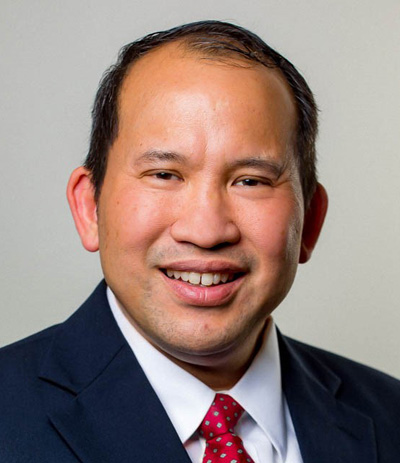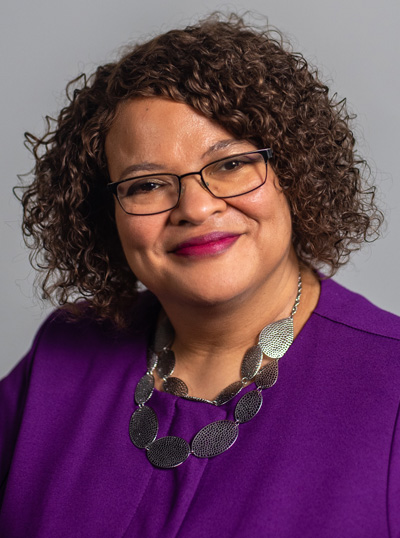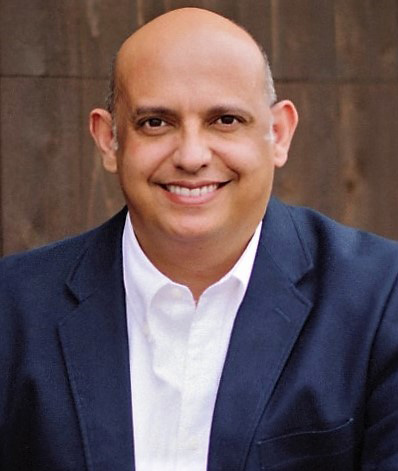The landmark events of 2020 surrounding systemic racism have led many companies to proactively consider their practices related to diversity, equity, and inclusion (DE&I). Other developments, such as the ongoing job losses directly resulting from COVID-19 that are impacting women far more than men, have also intensified awareness of inequities throughout the World of Work and are placing additional pressure on corporations to rectify these imbalances.
For some, these events present an opportunity to reevaluate and enhance their current DE&I efforts. For others, they may prompt the development and execution of actions and practices to promote DE&I for the first time, both within and outside of their organizations. Regardless of where an organization currently stands, it’s clear that DE&I can no longer be treated as a simple HR initiative to mark complete.
We continue to see proof that the benefits of diversity of thought within a team accrue and multiply, both culturally and fiscally. DE&I needs to be seen as a business imperative that is acknowledged, understood, and embodied by the leadership team — and it needs to continuously evolve and modernize alongside our workforce.
Talent access professionals play an increasingly important role in promoting DE&I as they advise their clients on effective talent strategies. We asked several of our Network owners who are committed to DE&I progress for their takes on where we are, what we need to do, and how to achieve the best outcomes for everyone.
What DE&I Really Means
 While diversity, equity, and inclusion are often grouped together, the three concepts do have unique meanings that are important to understand. “Diversity is our reality: the world is richly made up of different cultures, ethnicities, genders, sexual orientations, abilities,” explains Amy Woolf, Director of the Woolf Partnership in London. “Inclusion is our choice to include people who think, act, look, and behave differently to us. Equity is about creating an even playing field.” Woolf explains that we’ve grouped them together because they’re so intrinsically intertwined. “Each of the topics is vital for our success; diversity without inclusion doesn’t work, and inclusion without equity leaves people feeling disenfranchised.”
While diversity, equity, and inclusion are often grouped together, the three concepts do have unique meanings that are important to understand. “Diversity is our reality: the world is richly made up of different cultures, ethnicities, genders, sexual orientations, abilities,” explains Amy Woolf, Director of the Woolf Partnership in London. “Inclusion is our choice to include people who think, act, look, and behave differently to us. Equity is about creating an even playing field.” Woolf explains that we’ve grouped them together because they’re so intrinsically intertwined. “Each of the topics is vital for our success; diversity without inclusion doesn’t work, and inclusion without equity leaves people feeling disenfranchised.”
 Chris Yee, Managing Partner, Zenith Search Partners, emphasizes just how far the concept of diversity spans. “Sometimes diversity is obvious: race, gender, and age. But often, diversity means a diversity of thought or experience base,” he says.
Chris Yee, Managing Partner, Zenith Search Partners, emphasizes just how far the concept of diversity spans. “Sometimes diversity is obvious: race, gender, and age. But often, diversity means a diversity of thought or experience base,” he says.
 For Geneva Taylor, Managing Director of Tellis Executive Search, DE&I means more than just having a seat at the table. “As a black female in STEM, I’d add that it means knowing there is a room, a table, and a seat where you are seen, you are heard, and you have a voice.”
For Geneva Taylor, Managing Director of Tellis Executive Search, DE&I means more than just having a seat at the table. “As a black female in STEM, I’d add that it means knowing there is a room, a table, and a seat where you are seen, you are heard, and you have a voice.”
Why It Matters
Our Network has seen first hand that hiring a diverse team broadens a company’s perspective in a way that directly benefits its bottom line. A top concern for any HR team is the cost of attrition should a great hire find a better opportunity. “If your competition offers more encouragement and opportunity than your company does, you will lose top talent to competitors who are tackling these issues proactively,” says Taylor.
But the financial implications of overlooking DE&I extend beyond hiring costs. “If you fail to recruit, retain, and promote diverse talent you are missing a huge opportunity to tap into what your clients or customers really want and the ability to uncover your blind spots,” Woolf explains, warning of companies that are made up of the same people from the same backgrounds with the same experiences. “They will keep producing the same results and will not be able to spot — and correct — their weaknesses.”
Of course, organizations should be taking DE&I seriously for non-fiscal reasons, too. That DE&I matters in a profound way is made crystal clear from the perspective of those who are personally impacted. “I’m a first-generation American whose parents came here from China. I’ve been in the Houston area all my life, but I’ve seen racial bias first-hand and so have all three of my children,” says Yee.  “As a minority and a foreign national in the USA who emigrated from South America, I know firsthand what being discriminated against feels like,” echoes Carlos Perez, Managing Partner, CP & Krell Group. “It is unfair and unethical.”
“As a minority and a foreign national in the USA who emigrated from South America, I know firsthand what being discriminated against feels like,” echoes Carlos Perez, Managing Partner, CP & Krell Group. “It is unfair and unethical.”
How to Help Clients Prioritize DE&I
As talent access leaders, our Network of over 325 search firm owners have a dual responsibility when it comes to DE&I. Not only do they need to consider these factors as they build their own teams, they also have the responsibility to educate and support their clients when it comes to building a truly diverse, inclusive, and equitable workforce.
Yee coaches his team to ask questions that will open the door to a dialogue about a diverse talent pool. “We ask open-ended questions like ‘What are your business goals for this year?’ and translate that into ‘How might a diverse candidate help you achieve those goals?’,” Yee shares. “We have helped clients see that people from other industries with different skill sets might be very positive additions. For our own business, we are always looking for talent that can broaden our thinking and our reach.”
Woolf agrees that much of the time it comes down to education. “Fortunately, many of my clients are eager to hire diverse candidates. Unfortunately, they don’t always recognize the barriers to accessing brilliant talent,” she says. “Businesses may need to consider finding slightly more junior talent and nurturing them, offering opportunities, and allowing them time to flourish.” Woolf stresses that hiring managers must be receptive to different ways of thinking. “People who look, act, think, and feel differently need encouragement and the opportunity to thrive,” she says.
Perez is on the same page. “We need to recognize and help our clients understand that the world we live in, and work in, has changed even in the last five years,” he says. “It is our responsibility as recruiters to learn about a workforce made up of first, second, and third generation immigrants whose likes, purchasing preferences, and customs are different.” He advocates for transparency and straight talk. “Have an upfront, honest conversation with clients to tell them that you take pride in working with diverse candidates,” he says. “And include a clause in your contracts saying that you will not discriminate against any race, gender, or other groups of people.”
How to Cultivate a Diverse Talent Pool
Wanting to build, nurture, and grow a diverse, inclusive workforce is a great first step — but the work doesn’t end there. It can be challenging to source a diverse talent pool, and requires dedication and proactive attention.
“We attend industry networking events for diverse groups to ensure we are constantly widening our reach,” shares Woolf. “When sourcing candidates we look in both obvious and unlikely areas, and we keep in touch with as many candidates as possible. You have to track people’s careers, understand where they want to go, and find ways to help them. Ultimately, it is about nurturing relationships, as we would with all candidates.”
It’s important to recognize that effecting change requires you to speak up and be seen leading projects and initiatives within your company. “You can’t be silent about it,” stresses Taylor. “When I left my corporate career to start my business, I was told by many diverse people who came behind me that because they saw me in higher level leadership positions they knew it was possible for them to do the same. Diverse representation matters.”
How to Design a Fair Interview Process
One of the biggest impacts a talent access partner can have on a company’s DE&I practices comes down to how they shape the interview process. Creating a fair process that doesn’t favor certain candidates or backgrounds is key.
Taylor says that it’s often worthwhile to hire a consultant for anti-bias and change management training, which can help your team understand and apply the concepts of DE&I to interviewing. Woolf suggests focusing on data. “Gather qualitative and quantitative data from candidates and employees, and consider how your business appears to candidates.” Top of mind for her: “What does your website look like? How inclusive are your job postings? What does your inclusion policy look like? Are there enough diverse interviewers included?”
What Happens When DE&I is Prioritized
Yee believes the importance of DE&I extends well beyond a new hire. It’s about positioning your firm for the future. “Cultural fit is important, but if your current culture might stunt your future ability to attract and retain talent then perhaps you need to rethink it. Every hire will either reinforce your status quo or change it,” he says. “Think of where you want your company to be 25 years from now. What talent do you need today to bring about that future state?”
Each of these leaders has proof that DE&I makes a very material difference. “When I managed new recruits for my former company’s elite graduate rotational program, I made sure we went to the best schools, including the best Historically Black Colleges and Universities (HBCUs),” says Taylor. “One year we hired five diverse students and one majority student. The teambuilding, camaraderie, and innovation this team brought to the broader organization were outstanding.”
Yee speaks to the impact of female perspective in his own practice. “Molly Baize has been a spectacular addition to our team,” he says. “She works daily to evangelize and enact change as she speaks with candidates and clients. As a female in the male-dominated chemical industry, she is diversity in action.”
One of Woolf’s favorite success stories involves a former colleague returning from maternity leave. “She proposed to her boss that she work part-time on a new initiative to help young women succeed in technology,” explains Woolf. “Since its inception the number of women in technology at her company has doubled — all due to one person feeling empowered to bring a cohesive plan to leadership, and for that leadership to buy into it.”
Perez has built his whole focus around the growing need for diverse talent. “Clients from Latin America reach out to us to help them find bilingual Latinos in the U.S.,” he says. “About 90 percent of our recruits speak at least two languages and are part of a minority group, representing 92 percent of our searches in the past year.”
What’s the Bottom Line?
We’ve seen over the past few years that focusing on diversity by increasing representation of people from various backgrounds, perspectives, and experiences is only part of the equation. It’s equally important that we make space for and amplify the voices of everyone in the workplace. Forward-thinking companies know they also have to prioritize diversity, equity, and inclusion in combination as a critical part of their overall business strategy.
As Taylor summarizes: “DE&I doesn’t mean less pie for any one group. In the end, it is just a bigger, deeper pie and we all get to have a piece out of it.”
